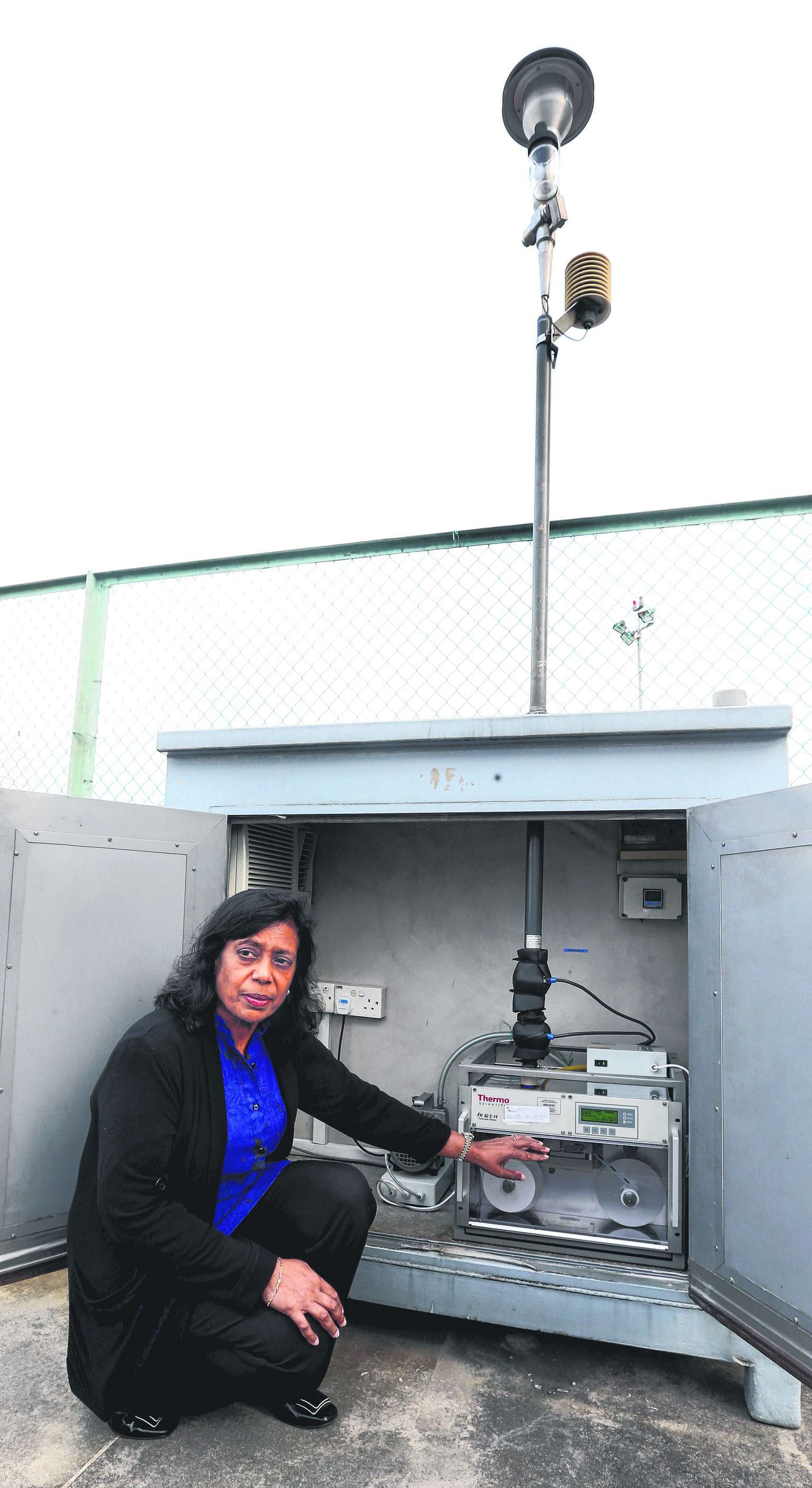NEA: No to 1-hour PSI
Sign up now: Get ST's newsletters delivered to your inbox

Mrs Indrani Rajaram with a machine used by NEA to help measure the concentration of PM2.5 in the air. Converting raw pollutant concentration data into one-hour PSI readings is not supported by health studies, she said.
ST PHOTO: LAU FOOK KONG
Follow topic:
The National Environment Agency (NEA) will not heed calls for it to provide one-hour Pollutant Standards Index (PSI) readings.
This is because converting raw pollutant concentration data into one-hour PSI readings is not supported by health studies, said project director and chief scientific officer Indrani Rajaram from the NEA's pollution control department yesterday.
The NEA calculates PSI by inputting pollutant concentration data into a formula that takes into account breakpoints - upper and lower concentration limits derived from health studies.

Mrs Indrani Rajaram with a machine used by NEA to help measure the concentration of PM2.5 in the air. Converting raw pollutant concentration data into one-hour PSI readings is not supported by health studies, she said.
ST PHOTO: LAU FOOK KONG
"If tomorrow, there is a very rigorous health study that tells us that (there is a) one-hour PM2.5 concentration that is harmful, we will use that to do a conversion.
"But at the moment, studies out there don't give you a number supported by health studies."
She urged people to use three-hour PSI readings or one-hour concentrations of PM2.5 - the dominant pollutant during periods of haze - as "an indicative measure to make adjustments to daily activities". As a gauge, the maximum concentration of PM2.5 on a regular, non-hazy day is usually between 20 micrograms and 35 micrograms per cubic m. It becomes a serious problem when the numbers hit 100, and dangerous when it exceeds 200.
Mrs Indrani stressed that the three-hour PSI is not a gauge of whether the air quality is good, moderate or hazardous - bands based on only the 24-hour PSI. Many have called for hourly PSI readings to better plan their activities.
The NEA also said it is looking at ways to improve the user interface on its MyENV app and website.

